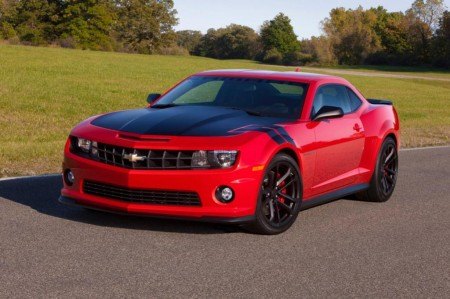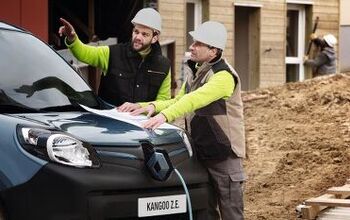Canadian Government Investigating Price Discrepancies For New Cars
Every Canadian consumer knows that when it comes to new car prices, we get screwed. Yes, Canada is a small market with higher taxes. It costs more to do business here in part because the high distribution costs can’t be amortized over 300-odd million people. In addition, things like metric instruments further complicate things.
But then there’s the question of why a Toyota RAV4, built two hours outside of Toronto, costs $2,890 less in Hawaii than it does in Canada. Why does an Oshawa-built Camaro demand a $4,685 premium in Canada? Where does BMW get off charging a $19,300 premium in the Great White North for a 535i xDrive, a 38.9 percent increase over the U.S. sticker?
The price discrepancy issue was the subject of a report by Canada’s Senate. Other consumer items like books and sporting goods were also investigated, but cars were a central focus. Interestingly enough, certain vehicles are actually cheaper to buy in Canada; these tend to be compact cars like the Honda Civic and Toyota Corolla, which are popular with Canadians and built in Ontario.
Not so for other segments, like sports cars and luxury vehicles. The report mentions that consumers in Canada looking for these vehicles will pay the price that “the market will bear”. Translation: f**k you, we know we can gouge you, so we’ll do it. Of course, it’s the right of every business to set their own prices and earn a profit, which is precisely what makes it so difficult for the government to do anything about this matter. On the other hand, the compact segment is ultra-competitive in Canada, so it’s in the OEM’s interest to make sure the vehicles are priced competitively. But even mainstream cars like the Dodge Charger, built in a suburb of Toronto, can be as much as 20 percent higher in Canada than in the United States.
Some of the suggestions laid out for lowering vehicle prices, like lowering certain tariffs may help lower the prices, but some experts interviewed in the report suggested that it was doubtful that the savings would be passed onto consumers by the OEMs. For domestic vehicles, it’s hard to imagine the government being able to do anything. Price controls for Camaros would be a farce, especially for a government as committed to free-market principles as the current Conservative government. Ultimately, it’s unlikely that the government will be able to do anything about it, though there’s one “left-field” savior that is just crazy enough to possibly make a difference.
One aspect that got a brief mention was the harmonization of safety standards between Canada and the U.S. Currently, Canada uses the FMVSS standards with a couple minor variations, and the OEMs have long used this compliance as an excuse for high MSRPs. What will really be interesting is if the proposed Canada-EU free trade deal leads to a harmonization between Canada and the UN/ECE standards. One complaint among Canadian car enthusiasts and OEMs has been that Canada’s market tastes have long been aligned with Europe, but the FMVSS-based standards mean that homologating European compact cars has been far too expensive. Meanwhile, Australia, which uses the UN standards and has a comparable market size to Canada, gets all manner of cars that North American enthusiasts can only fantasize about.
Imagine if the EU Free Trade deal opened the floodgates to a whole new swath of product for Canadian consumers? It may not make the Camaro any cheaper, but the amount of available models would increase exponentially, and auto makers would no doubt try and take advantage of the altered regulations to bring better-suited product to Canada. It’s hard to imagine greater overall choice not having any positive effect on vehicle prices. But then again, with things currently as nonsensical as they are, it’s tough to make that call definitively.
More by Derek Kreindler
Latest Car Reviews
Read moreLatest Product Reviews
Read moreRecent Comments
- Redapple2 Front tag obscured. Rear tag - clear and sharp. Huh?
- Redapple2 I can state what NOT to buy. HK. High theft. Insurance. Unrefined NVH. Rapidly degrading interiors. HK? No way !
- Luke42 Serious answer:Now that I DD an EV, buying an EV to replace my wife’s Honda Civic is in the queue. My wife likes her Honda, she likes Apple CarPlay, and she can’t stand Elon Musk - so Tesla starts the competition with two demerit-points and Honda starts the competition with one merit-point.The Honda Prologue looked like a great candidate until Honda announced that the partnership with GM was a one-off thing and that their future EVs would be designed in-house.Now I’m more inclined toward the Blazer EV, the vehicle on which the Prologue is based. The Blazer EV and the Ultium platform won’t be orphaned by GM any time soon. But then I have to convince my wife she would like it better than her Honda Civic, and that’s a heavy lift because she doesn’t have any reason to be dissatisfied with her current car (I take care of all of the ICE-hassles for her).Since my wife’s Honda Civic is holding up well, since she likes the car, and since I take care of most of the drawbacks of drawbacks of ICE ownership for her, there’s no urgency to replace this vehicle.Honestly, if a paid-off Honda Civic is my wife’s automotive hill to die on, that’s a pretty good place to be - even though I personally have to continue dealing the hassles and expenses of ICE ownership on her behalf.My plan is simply to wait-and-see what Honda does next. Maybe they’ll introduce the perfect EV for her one day, and I’ll just go buy it.
- 2ACL I have a soft spot for high-performance, shark-nosed Lancers (I considered the less-potent Ralliart during the period in which I eventually selected my first TL SH-AWD), but it's can be challenging to find a specimen that doesn't exhibit signs of abuse, and while most of the components are sufficiently universal in their function to service without manufacturer support, the SST isn't one of them. The shops that specialize in it are familiar with the failure as described by the seller and thus might be able to fix this one at a substantial savings to replacement. There's only a handful of them in the nation, however. A salvaged unit is another option, but the usual risks are magnified by similar logistical challenges to trying to save the original.I hope this is a case of the seller overvaluing the Evo market rather than still owing or having put the mods on credit. Because the best offer won't be anywhere near the current listing.
- Peter Buying an EV from Toyota is like buying a Bible from Donald Trump. Don’t be surprised if some very important parts are left out.


































Comments
Join the conversation
At 35 million people, there are about 50% more Canadians than Australians. Therefore the Canadian market is about 50% larger.
I used to spend a lot of time at a local Toledo store that sold tires and electronics. They were the only local place that had high end police scanners in stock that wasn't a Radio Shack. They didn't have the greatest prices available in the US, to put it mildly, but there were a lot of Canadians buying tires there and when they would see a receiver or scanner for like half what it was back home, they would start thinking about buying something and trying to "smuggle" it back home. The prices back home were just insane, so it made perfect sense. One guy actually bought a scanner, had it modified to pick up cell phones (The greatest source of entertainment, ever)right out of the box, then hid it inside the door panel to get it home. I had to laugh, it was like he was smuggling drugs. I wonder what happened if they caught you, a fine, confiscation, or what?